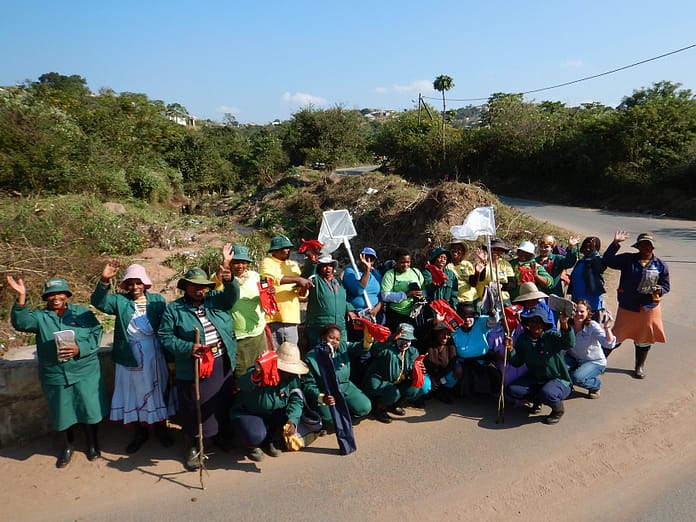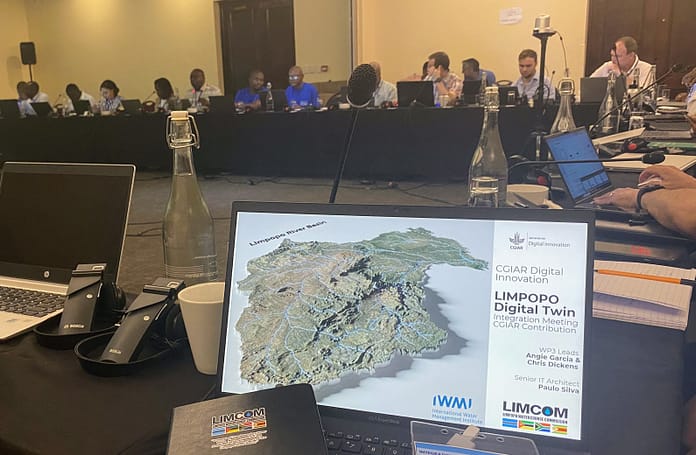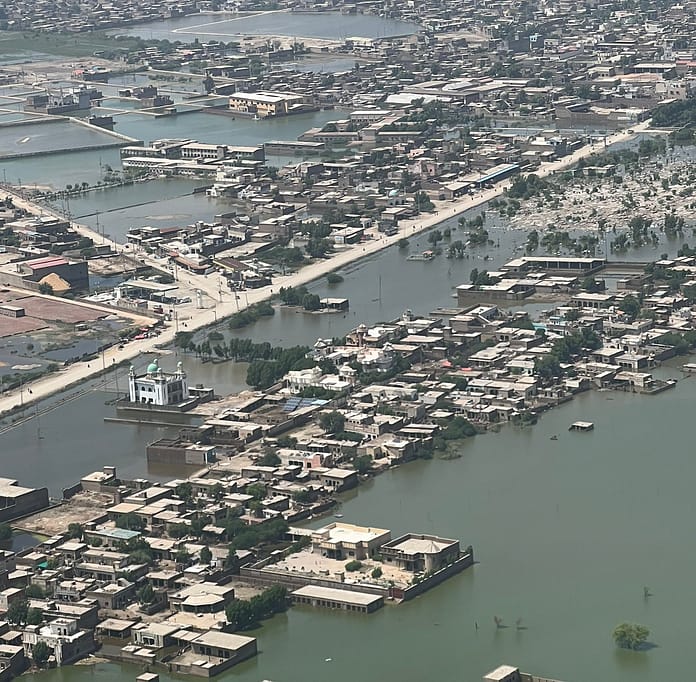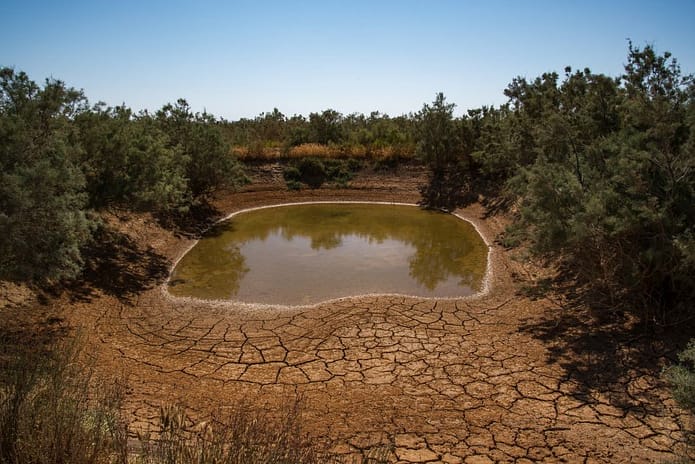By Angie Garcia, Chris Dickens and Paulo Silva
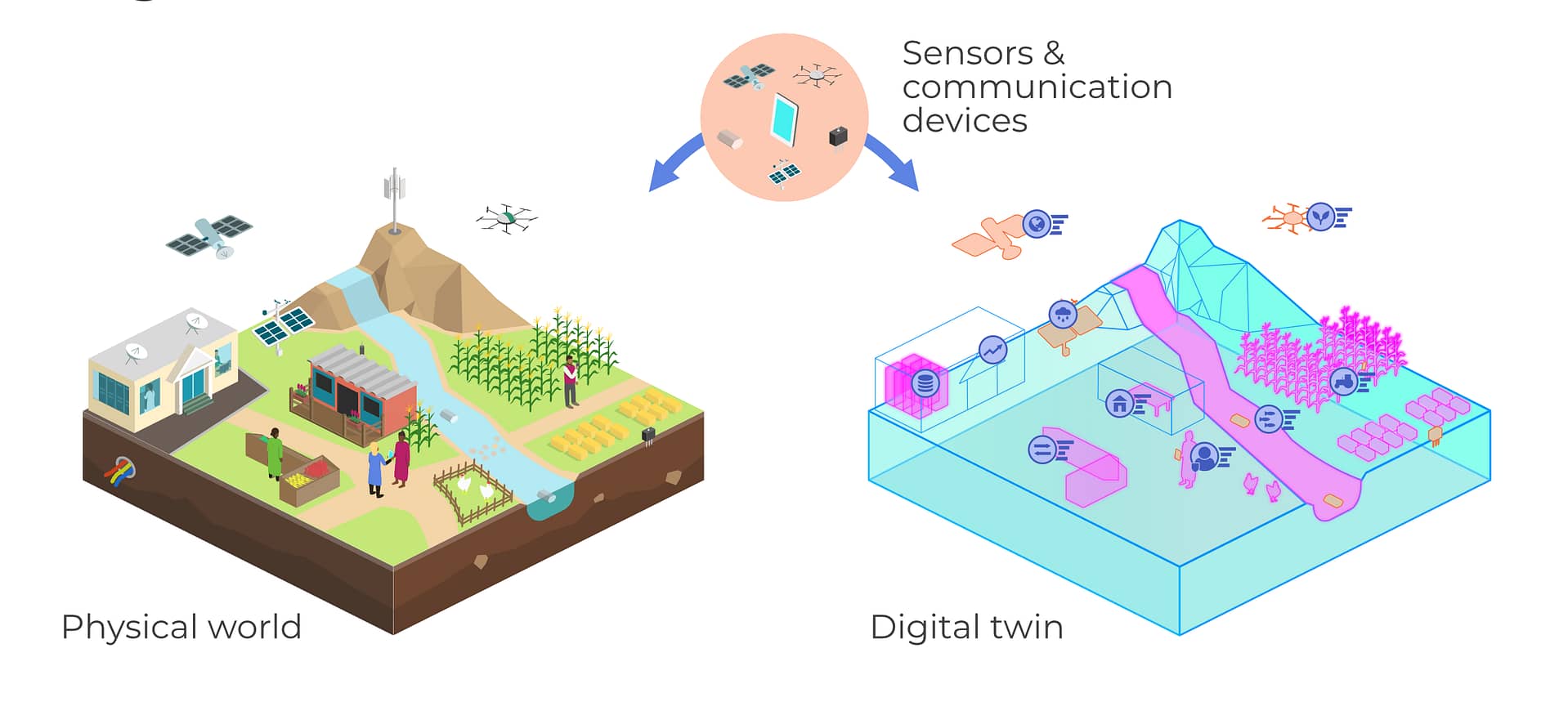
River basins are vital sources of water, food, and livelihoods for millions of people, but they also face many challenges such as climate change, pollution, land degradation, and biodiversity loss. Informed decision making is crucial for the sustainable management of transboundary river basins, ensuring equitable water allocation, mitigating conflict, and fostering long-term cooperation. In the complex and dynamic environment of transboundary river basins, traditional data-gathering methods often fall short. This is where digital twin for river basins—a digital representation of the entire basin—encompassing wide thematic fields will play a critical role in bridging the gap between data and informed decision-making.
A recent International Water Management Institute (IWMI) working paper from the CGIAR Initiative on Digital Innovation reviewed the potential of digital twins for river basin management in developing countries. The report highlights the benefits and challenges of implementing digital twins for water management in a river basin context.
The benefits of digital twins for river basin management
- Seamless integration of diverse data sources, including real-time sensor measurements, historical data, and satellite imagery to facilitate advanced analytics and holistic understanding of basin dynamics.
- Improved monitoring and prediction of hydrological processes and extreme events such as floods and droughts, using AI techniques such as machine learning and neural networks.
- Enhanced visualization and interaction with the river basin digital twin system, using immersive technologies such as virtual reality and 3D representation.
- A conduit for collaborative decision making and strengthening multi-stakeholder engagement that can facilitate transparent communication and development of equitable solutions that consider the needs and interests of all parties involved in water management.
- Cost optimization and risk mitigation for decision making processes, using cloud-based technologies and standards as well as implementation of robust governance frameworks, ensuring interoperability and transparent access to a single source of validated data and insights for the entire ecosystem surrounding the river basin.
- The potential to explore the full spectrum of digital twin-enabled capabilities: enhanced monitoring through sensory data fed and processed by the underlying digital model of the river basin; the ability to perform simulations and predictions based on automated ingestion of near real time data; automated feedback loops to the physical world, with actionable alerts, messages and data; or even automated commands sent to actuators in existing mechanical and electrical components of the river basin ecosystem.
The challenges of digital twins for river basin management
- Data availability and quality, especially in remote and rural areas where sensors and networks are scarce or unreliable.
- Data interoperability and integration, especially among diverse sources, formats and scales of data. Digital twins need to be seamlessly integrated with existing data management systems, operational tools, and decision-support platforms used by water management agencies to avoid information silos.
- Data security and privacy, especially when dealing with sensitive and personal data of users and communities. Robust cyber security measures are crucial to protect sensitive data and prevent unauthorized access.
- Data ethics and equity, especially when ensuring that the benefits and impacts of digital twins are shared fairly and inclusively. Deploying and maintaining a digital twin necessitates a robust technological infrastructure, including high-bandwidth communication networks, reliable data storage solutions, and powerful computing resources. Additionally, stakeholders require training and capacity building to utilize the digital twin effectively for decision-making.
- Sustainable funding mechanisms are needed to ensure long-term operation and maintainability of the solution, especially in developing countries where resources may be limited.
- Effective governance frameworks are essential to establish clear roles and responsibilities in terms of managing and updating the digital twin as a networked system shared by multiple riparian countries in transboundary basins.
- Building public trust in the digital twin is crucial for its widespread adoption and successful implementation. Effective communication strategies and transparent information sharing are necessary to address public concerns and ensure a sense of ownership and engagement.
- Existing river basin legal and regulatory frameworks need to be adapted to accommodate the use of digital twins in transboundary river basin context. This includes addressing issues related to data sharing, ownership, decision making, liability, and intellectual property rights.
What do digital twins mean for the global south?
Digital twin technology has proven successful in the global north, although there are only limited examples of river basin management and those not fully implemented. IWMI’s report highlights some of the most advanced implementations. However, in developing countries, the adoption of such platforms can be challenging if robust Information Technology and communications infrastructures are not available that would provide more accurate, detailed and timely data to enable decision making. A solution is rapidly emerging however, with the increasing sophistication of Earth Observation data that covers all corners of the globe.
As technology becomes more affordable and communities gain more access to mobile phones, Citizen Science applications will become increasingly significant soon. Humans in developing countries, with the support of Artificial Intelligence (AI), will play a vital role in effectively communicating their main water needs to riparian governments.
The role of AI and computational modelling in water management

AI applications, when applied to existing models ranging from hydrology modelling, flood and drought prediction models leveraging machine learning (ML) techniques to sophisticated tools like PROBFLO for environmental flow management, aid in sustaining aquatic ecosystems while considering societal needs. AI can also play a pivotal role in monitoring and predicting water quality, utilizing machine learning algorithms to detect anomalies, prevent potential contamination and predict resource allocation in water supply networks. Additionally, AI-powered crop and water body mapping would not only enable precise assessments but also facilitate informed decision-making in agriculture and environmental conservation. AI techniques could contribute to optimizing river basin management by analysing diverse data sets, forecasting demand, and devising efficient strategies for equitable water distribution, all crucial aspects in face of the escalating global water challenges.
The impact of digital twins in policy
Digital twins hold immense potential for tackling climate change, but responsible governance is paramount. Robust policies must address data privacy, security, and equitable access. Ethical data practices, standardized platforms and capacity-building support are crucial for inclusivity. Additionally, a strong governance framework for AI and transparent public engagement foster trust and responsible decision-making. According to IWMI Principal Researcher Giriraj Amarnath, innovative solutions and responsible management can pave the way to address the complex challenges of water security. By navigating these considerations thoughtfully, we can harness the power of digital twins to create a more sustainable future for all.
The next step
IWMI has set an ambitious agenda for 2024, aiming to implement the first prototype of a digital twin for a river basin in the Limpopo Basin in collaboration with the Limpopo Watercourse Commission (LIMCOM), with initial funding provided by the CGIAR Initiative on Digital Innovation.
In pursuit of our goal of a water-secure world #OneBasinAtaTime, IWMI invites potential technological partners and funders to establish strategic partnerships toward this mission and to explore the potential for the development of added-value products and services underpinned by the digital twin platform and made available in business to government (B2G) or even government to citizen (G2C) business models.
If you are interested to know more about how IWMI plans to address water security using the digital twin, please reach out to us.
The researchers in the Water Data Science Group developing the prototype digital twin at IWMI are:
Mariangel Garcia, CGIAR – Digital Innovation – System Modeling Work Package Lead & IWMI Research Group Leader Water Futures Data and Analytics
Chris Dickens, CGIAR – Digital Innovation – System Modeling Co-Lead
Read the working paper: Options for digital twin application in developing country river basin management: a review




